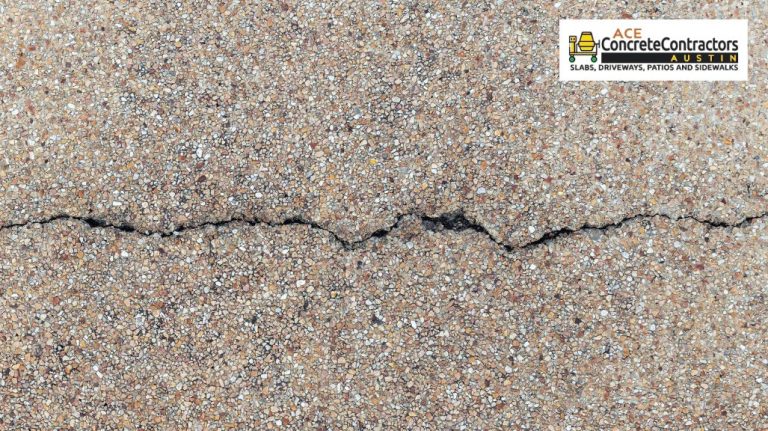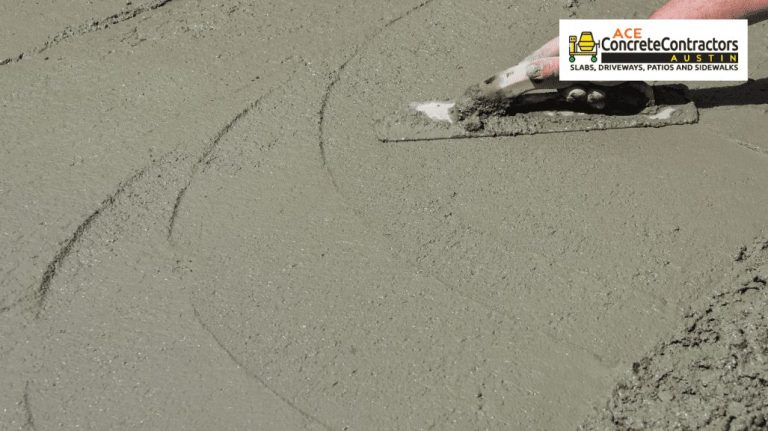Table of Contents
A patio is a fantastic feature if you live in an area with excellent weather. Whether entertaining guests or enjoying time with the family, it can certainly make for a useful and functional space. However, when cracks start to form in the concrete flooring, it can take away from the overall visual appeal of your patio.
Although concrete is one of the more hardy building materials, years of faithful use can result in structural damage. This can make your patio look unattractive and encourage the growth of weeds, making the area look even more underwhelming.
Fortunately, we have a guide on how to fix cracks in concrete patio surfaces to help you get your outdoor living area looking great once more. Let’s get started.
Cracked patio blues? Learn the art of concrete crack repair in our latest guide! 🛠️🏡 Discover the tips and tricks at https://t.co/nbYuzJkhqJ #ConcreteRepair #HomeImprovement #AustinTx pic.twitter.com/2LsnmSVrBv
— Ace Concrete Contractors Austin (@aceconcreteatx) January 12, 2024
Why You Shouldn’t Ignore Concrete Cracks
Concrete cracks may indicate deeper underlying issues; if not dealt with promptly, they could leave you with even more significant problems. This would ultimately cost more to repair as the damage becomes more extensive, so nipping the issue in the bud is essential.
The first step is to assess the severity of the concrete crack. Hairline cracks are usually harmless and can be patched to prevent moisture from causing further degradation. However, if you notice more severe issues, you must call an expert to repair the cracked concrete.
What Are the Different Types of Concrete Cracks?
There are two types of cracks: structural and non-structural cracks. To ensure that the underlying cause of the issue has been dealt with and determine which type of crack you have, it’s important to seek professional assistance.
Structural Cracks in Concrete
There are several reasons why structural damage occurs in concrete structures. Aging, poor installation, incorrect expansion joints, and overloading are common causes. These cracks can be dangerous, as they can cause serious structural damage.
Non-structural Cracks
On the other hand, non-structural breaks in concrete slabs are formed because of tension in building materials and do not jeopardize their structural integrity. However, if unattended, they can cause reinforcing material degradation and promote water intrusion and other harmful environmental chemicals, leading to major issues.
Materials Used for Repairing Cracks
Before we get to the instructions on installing a concrete patch, let’s discuss the materials used. The truth is that concrete cracks cannot be repaired using a concrete mix because the aggregate rock bits are often too big to fit in tiny crevices.
Instead, you can use sanded acrylic latex, a polymer-based crack filler that requires a putty knife or caulking gun to apply the material to the crack. These elastomeric fillers can permit the concrete slab to change slightly over time without affecting its structural integrity.
In many cases, a solid crack filler is applied before the polymer-based filler is added to create a concrete patch.
Alternatively, you could also go for a mortar mix made using three parts masonry sand to one part Portland cement. This is often used when fixing large cracks.
Step-by-step Guide on How to Fix a Concrete Crack
Without further ado, here are the steps you will need to take to restore your concrete surface:
Step One: Prepare the Surface by Removing Loose Concrete
Before applying your filler, removing any loose material using a wire brush is important. You’ll also need to widen the crack to create a V-shape for better results. Be sure to eliminate loose debris created when making the gap bigger before moving on to the next step.
Step Two: Apply a Thin Layer or Crack Filler
If you have a small crack, you can apply the solid crack filler before applying polymer-based filler over the top. However, it’s a good idea to use a funnel to insert sand into the gap first for larger cracks. This can help to save money, as it cuts down material costs. Another option for large cracks is inserting a closed-cell backer rod.
Step Three: Even Out the Filler
Once you have applied the polymer-based filler, you must flatten it out to blend in with the surrounding concrete. Run a putty knife along the raised area toward the crack to flatten the material in high sections. You may also need to apply more filler to spots that have pockets.
Step Four: Allow It to Dry
Allow the filler to cure for 24 hours before applying paint or other finishing materials.
When to Call a Professional
The truth is that it takes time and effort to repair cracks in a concrete surface. A professional concrete repair specialist can help you save time and money and diagnose the underlying problem correctly, saving hundreds of dollars on extensive concrete repair work.
Moreover, when you contact an expert, you will also improve the chances that your patio will look aesthetically pleasing once the concrete has been fixed. When you attempt a DIY fix, you could also expose yourself to several safety risks, mainly if you have never performed a concrete repair before.
Contractors are safety-trained, so you will have the assurance that the job will be completed without any issues. Leaving it to the pros will also ensure you comply with the relevant building codes.
Final Thoughts
If performing a concrete crack repair seems daunting, the good news is that you don’t have to do it yourself. Ace Concrete Contractor has what it takes to help you get your patio in tip-top shape and prevent future cracks.
Contact us today for expert advice and professional assistance with your concrete surfaces!
Frequently Asked Questions
Will the crack be visible after it has been repaired?
Although the patch may always be visible, you can reduce its aesthetic impact by using a filler that resembles the color of your patio. Another option to hide the crack repair is paving or coating the entire patio with another layer of concrete. When you work with Ace Concrete Contractor, you can rest assured that we will provide a solution that meets your needs, preferences, and budget, so talk to us for further assistance!
Can I repair my patio in inclement weather?
Because concrete patios are prone to temperature changes and are exposed to moisture, this can affect your repair, so it’s important not to repair your patio in inclement weather. Most patch materials require that the air and the patio temperatures be 50 to 90 degrees Fahrenheit. Furthermore, it is essential to ensure that it is completely dry and that no rainfall is expected in the next 24 hours.
Should you fix cracks in concrete?
Absolutely. Filling cracks in concrete is vital, as they can indicate underlying issues. Additionally, cracks can allow moisture to seep into the existing slab, which can cause degradation over time, weakening the overall structure.
Is it normal for a concrete patio to crack?
Yes. Temperature changes and settling can lead to small cracks over time. While hairline fractures are typical and usually nothing to worry about, significant cracks in concrete often indicate a serious underlying issue that must be addressed.
Can you fix a crack in a concrete slab?
Although cracks in concrete structures may seem irreparable, the good news is that they can be fixed. Usually, repair material is used to fill small cracks, while larger cracks may require more extensive repair methods. If you’re unsure how to repair cracks in concrete patios or notice a large crack that may require additional steps to fix, it’s best to contact a professional.






